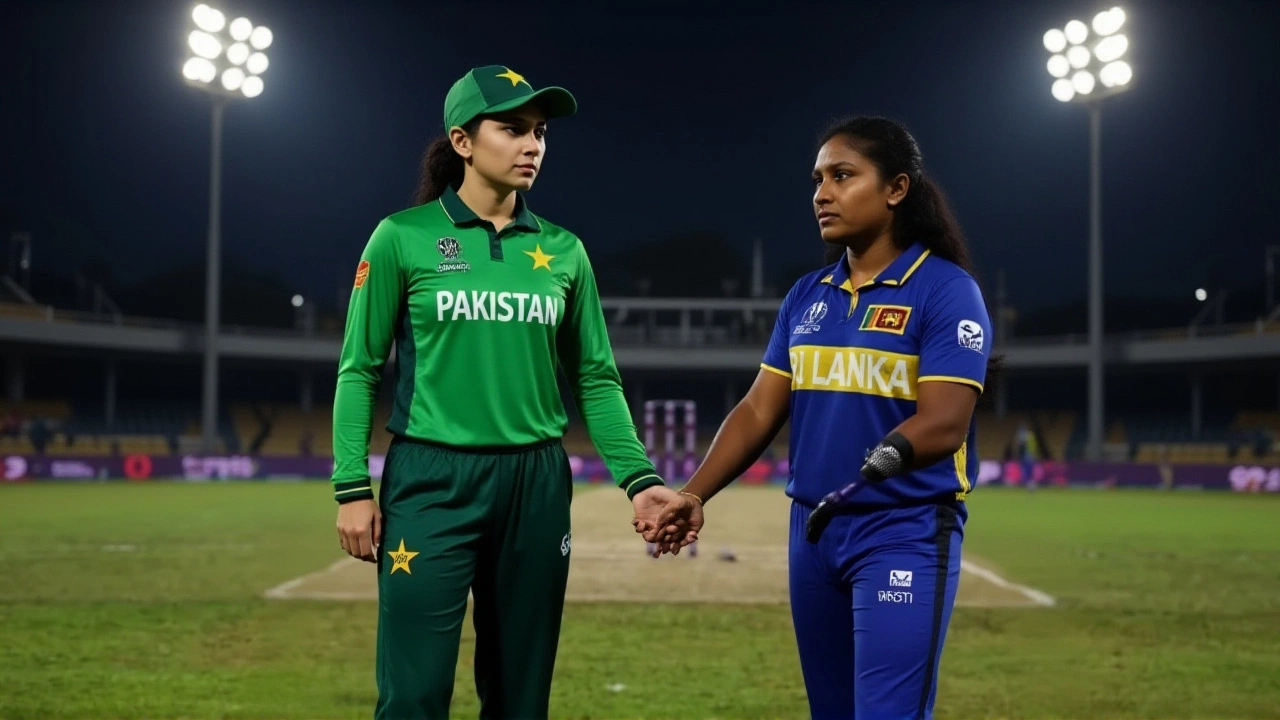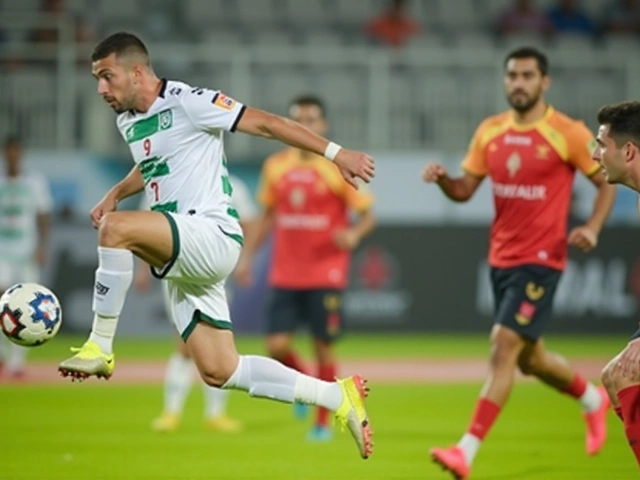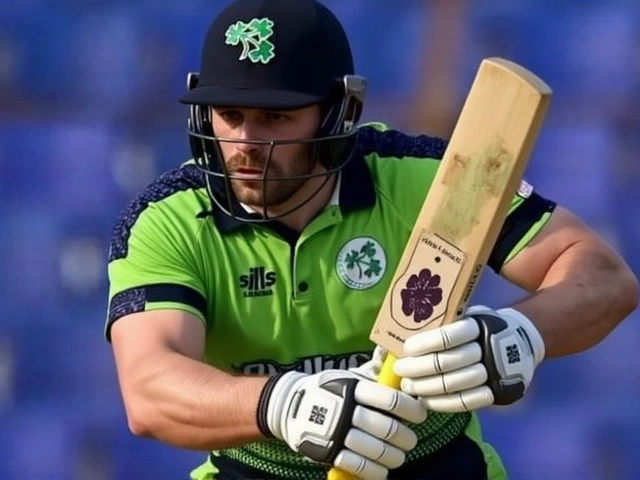
On October 31, 2023, at the Rajiv Gandhi International Cricket Stadium in Hyderabad, Pakistan pulled off the highest successful run chase in Cricket World Cup history — scoring 345/4 in just 48.2 overs to overhaul Sri Lanka’s 344/9. The chase wasn’t just a win. It was a statement. A breathtaking, nerveless assault on a target that had looked untouchable. And it came from two young batsmen who refused to let history pass them by.
The Unlikely Heroes
Abdullah Shafique, 23, and Mohammad Rizwan, 35, didn’t just bat — they redefined what’s possible in a World Cup chase. Shafique cracked 113 off 103 balls, his 13 fours carrying the weight of expectation. Rizwan, calm as a monk in a storm, remained unbeaten on 131 off 121, with two sixes and ten fours. Their third-wicket stand of 176 runs wasn’t just a partnership. It was a siege. The crowd, already electric, turned deafening when Rizwan brought up his century with a pull off Wanindu Hasaranga — a shot so clean, it seemed to silence every doubt.
What made it even more remarkable? The pressure. Pakistan had lost to New Zealand the day before, chasing 346 and falling just short. The narrative was clear: Pakistan’s batting was inconsistent. Their middle order was fragile. But here, in the middle of a packed stadium where the air smelled of popcorn and sweat, they didn’t just respond — they exploded.
The Supporting Cast That Held the Line
Shafique and Rizwan didn’t do it alone. Saud Shakeel, often overlooked, chipped in with a vital 31 off 30 balls in a 95-run stand for the fourth wicket. Iftikhar Ahmed, summoned at 295/4, smashed 22* off just 10 balls — a cameo that turned a tense finish into a celebration. Extras? 26 of them — 25 wides and one no-ball — a reminder that even the best-laid plans can be disrupted by the chaos of international cricket.
Meanwhile, Sri Lanka’s innings had looked formidable. Pathum Nissanka (68), Kusal Mendis (59), and Charith Asalanka (47) had stitched together a total that would have beaten most teams. But against Pakistan’s relentless pace attack — Shaheen Shah Afridi, Hasan Ali, and Haris Rauf — they never quite found the rhythm to go big. The pitch, slower than expected, had favored spinners early, but Pakistan’s bowlers held firm under pressure.
The Irony of Triumph
Here’s the twist: this wasn’t just Pakistan’s greatest World Cup chase. It was also their last. Despite the record, they finished fifth in the 10-team round-robin, missing the semifinals by one win. They’d beaten Bangladesh and Sri Lanka, but lost to India, Australia, and New Zealand — teams that were simply better when it mattered most.
Their captain, Babar Azam, managed just 10 off 15 in this match. Imam-ul-Haq, opening, made 12. The team’s top scorer in the tournament, Babar, ended with 475 runs — but only one century. Rizwan, by contrast, finished with 523 runs and three fifties. He was the heartbeat of a team that never quite found its rhythm as a unit.
Even the venue carried a bittersweet edge. The Rajiv Gandhi International Cricket Stadium, with its 55,000 seats, had hosted India’s dominant win over Pakistan earlier in the tournament. On October 31, it belonged to Pakistan — for one glorious, unforgettable afternoon.

The Bigger Picture
The ICC Cricket World Cup 2023 was always going to be about India and Australia. But Pakistan’s chase against Sri Lanka became one of its defining moments — not because it won them the trophy, but because it proved they could play fearless, world-class cricket under pressure. It was the kind of innings that reminds you why people fall in love with the game.
By the time the final rolled around on November 19 at the Narendra Modi Stadium in Ahmedabad, Australia had defeated India by 6 wickets to claim their sixth World Cup title. But in the memory of fans, it was Rizwan’s cover drive and Shafique’s straight drive that lingered longer — the two men who turned a near-impossible target into a moment of pure cricketing poetry.
Behind the Scenes
The Pakistan Cricket Board, headquartered in Lahore, had appointed Mickey Arthur as head coach in a bid to restore discipline. But discipline alone doesn’t win World Cups. Heart does. And on October 31, Pakistan had more heart than any team in the tournament.
The umpiring team — Joel Wilson from Trinidad and Tobago, Nitin Menon from India, with Richard Illingworth as third umpire — made no controversial decisions. The game was clean. Fair. And utterly unforgettable.
Frequently Asked Questions
What was the previous record for highest successful chase in a Cricket World Cup?
Before Pakistan’s 345/4 against Sri Lanka in 2023, the record was 341/5 by South Africa against Bangladesh in 2011 at the Punjab Cricket Association Stadium in Mohali. Pakistan surpassed it by four runs, making their chase the highest in World Cup history — a record that still stands as of 2024.
How many centuries were scored in that match?
The match featured three centuries: two from Pakistan (Rizwan and Shafique) and one from Sri Lanka’s Pathum Nissanka. It was the first time in World Cup history that three centuries were scored in a single match, making it the most prolific individual batting display in a World Cup game.
Why didn’t Pakistan qualify for the semifinals despite this record chase?
Pakistan finished fifth in the 10-team round-robin with four wins and five losses. Only the top four teams advanced. They lost crucial matches to India, Australia, and New Zealand — all of whom had better net run rates. Their win over Sri Lanka wasn’t enough to overcome earlier losses, highlighting how one great performance can’t compensate for inconsistency across the tournament.
Who were the key bowlers for Pakistan in the match?
Shaheen Shah Afridi took 2/65, Haris Rauf claimed 2/72, and Hasan Ali finished with 1/55. While their figures weren’t spectacular, their ability to contain the Sri Lankan middle order — especially during the final 15 overs — was critical. Sri Lanka lost their last five wickets for just 52 runs, and Pakistan’s pace trio kept the pressure on when spinners were struggling.
Did this chase change how teams approach run chases in ODIs?
Absolutely. Before this match, chasing 340+ was seen as a high-risk gamble. Afterward, teams began re-evaluating their strategies — especially in high-pressure knockout scenarios. Australia and India both adopted more aggressive top-order approaches in subsequent tournaments, citing Pakistan’s chase as proof that even the highest totals can be overcome with the right mindset and two match-winning batsmen.
What happened to Rizwan and Shafique after the World Cup?
Rizwan was named Player of the Tournament by the ICC, finishing as Pakistan’s top scorer with 523 runs. Shafique, despite being just 23, earned a central contract and was promoted to vice-captain in white-ball formats. Both remain pillars of Pakistan’s ODI setup, with Rizwan now considered one of the most reliable finishers in modern cricket.



